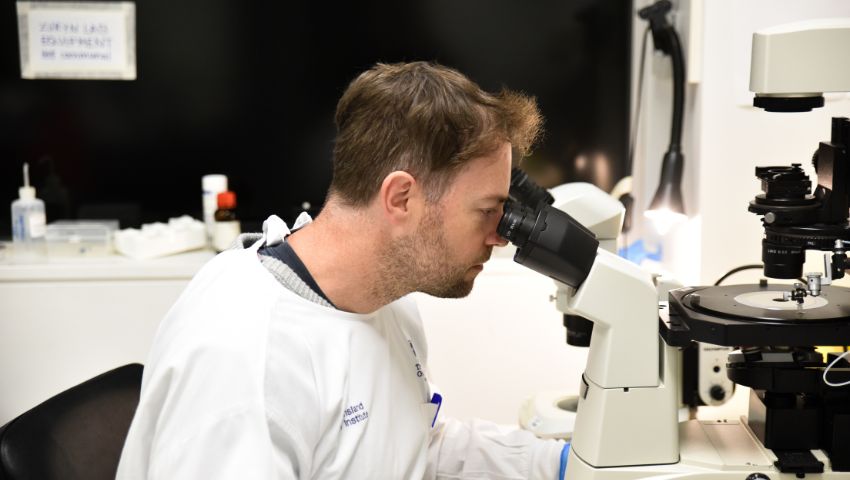Researcher profile: Associate Professor Steven Zuryn
During his undergraduate degree at The University of Queensland, Steven Zuryn realised that every cell in our bodies contained an entire universe as complex and fascinating as New York City. This tiny universe has inspired his research into understanding mitochondria, which generate the energy inside our cells to power this microscopic world but are also heavily linked to neurodegenerative disease.
Steven is now an Associate Professor and leading UQ’s Queensland Brain Institute’s epigenetics and mitochondrial biology lab, which explores the role and impact of mitochondrial dysfunction in neurodegenerative diseases. He is also one of the chief investigators in the new NHMRC-funded Centre of Research Excellence in Mechanisms in Neurodegeneration – Alzheimer’s Disease.
Establishing his career
After completing a PhD in genetics in 2008, Steven moved to Strasbourg, France as a postdoctoral researcher at the Institut Génétique Biologie Moléculaire Cellulaire.
“I chose the research lab in France because I liked the topic more than the others,” Steven said. “During my postdoc, I focused on making one discovery at a time without giving too much thought to future roles. I needed a big discovery and an impactful paper before directing my own research.”
Steven worked so hard at the science that his French is not excellent, but he credits his time overseas as invaluable for his career and life experience. During six years of research there, Steven published his first significant paper on epigenetics, which defined his next move.
“After that paper, I applied for group leader positions in Europe and Australia, never expecting to return to Brisbane. But the world-class support offered at QBI to establish my lab was too good to refuse,” Steven said.
“The support allowed me to dedicate my time solely to science, which is important because scientific discoveries are timeless and have international currency, but, like every new group leader, I had no training in lab management, and running my own was a steep learning curve.”
Since starting the lab in late 2015, Steven has recruited 13 researchers from around the world – France, Germany, Malaysia, China, India and Australia – whose innovative research continues to build on our fundamental knowledge of mitochondria, its unique DNA and the microscopic mechanics of each brain cell.

International leaders in mitochondrial genetics
Steven describes the lab’s three most significant discoveries so far, which have been supported by Federal Government funding, the Stafford Fox Medical Research Foundation, and the Clem Jones Centre for Ageing Dementia Research.
“We discovered the mitochondrial (mt)DNA (the mitochondria in our cells have their own genomes) is different in different cell types and that the mtDNA in neurons is quite protected but vulnerable to damage if these protective measures are lost. This can lead to genetic mutations in the mtDNA and neurodegenerative diseases, such as Parkinson’s disease,” Steven said.
“Our lab has also discovered a new function for a molecule, ATFS-1, that protects the integrity of mtDNA, promotes repair and helps prevent disease.
“Most recently, we have shown that the chemical attachment of methyl molecules can epigenetically modify the mitochondrial genome and that these chemical modifications protect against the propagation of disease-causing mtDNA genetic mutations.”
Today, Steven spends less time in the lab but is heavily involved in supervising the team, designing research projects, and seeking support for their research goals.
“Sharing the discoveries we make in the lab is rewarding. Even more rewarding is seeing the researchers grow and develop as their careers evolve,” Steven said.
“We are all driven to understand the fascinating world of mitochondria, but also acutely aware of our work’s potentially huge clinical impact on developing treatments for neurodegenerative diseases associated with mitochondrial dysfunction.”
